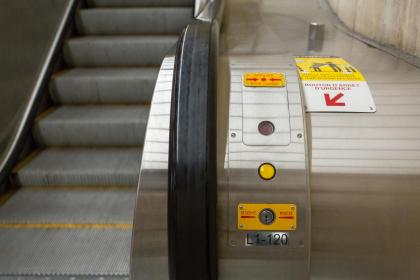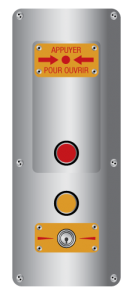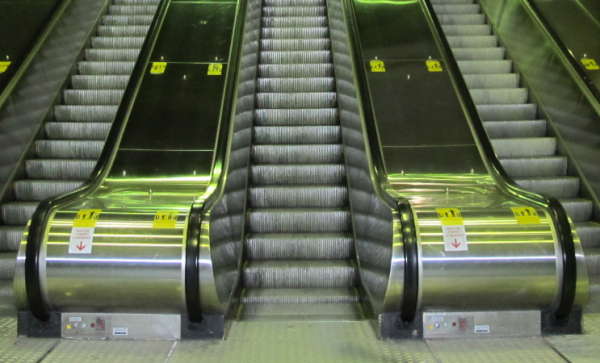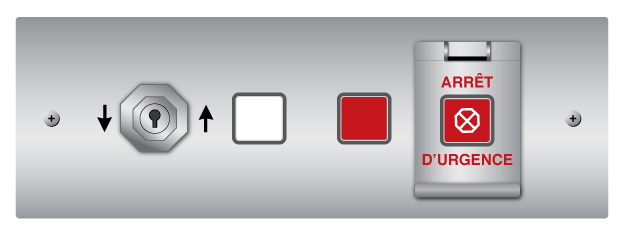Taking the escalator is an every day action, a commonplace occurrence. As a result, we sometimes forget how certain seemingly benign behaviours can actually cause harm.
Recommended behaviour
Hold the handrail
If you lose your balance or if the escalator suddenly stops, holding the handrail may prevent you from falling.
Mind the stairs
Overly long clothing, untied shoe laces or accessories dragging on the floor are all likely to get tangled in the top or bottom platforms or wedged in the gap on either side of the stairs. When clothing gets caught in the stairs’ mechanism, the movements of other people are impacted and can result in injury.
Avoid carrying bulky items
Escalators are designed to carry people, not objects. Oversize luggage could obstruct your view, cause you to lose your balance or prevent you from properly holding the handrail.
Ask for help with your stroller
A stroller’s wheels can get caught between the stairs and the bristles on each side, particularly at the top and bottom of the stairs. When such an incident happens, the escalator’s landing platform is blocked off, and people standing behind could fall on top of the stroller. It would be preferable to remove children from the stroller, hold them by the hand while holding the handrail with the other. The folded stroller could then be carried by another person using the escalator.
Stand up
You may feel it is safer to sit children down on the stairs, but that is not the case. Something as simple as sitting down can increase the risk of their clothes touching the stairs and getting snagged. Also, when children sit down on the stairs, their little hands and fingers are close to the stairs’ moving parts, causing more frequent and serious accidents.
Face the same direction taken by escalator
Travelling backwards on an escalator increases your risk of tripping on the top or bottom landing and falling.
Do not run
Running up or down an escalator increases the risk level both for you and for other people using it. You could fall or cause someone to lose their balance. Be particularly careful when you enter the building when it is raining or snowing, because the stairs can be more slippery when they are wet.
What to do in the event of an emergency?
If you witness such an incident, first stop the escalator by pushing the emergency stop buttons located at the top and bottom of the stairs.
There are two types of escalators in the métro network and each one has a different emergency button.
Most widespread model:


- Where is the bouton? to the right of the handrail, at waist level.
- How to use it? Press the top of the protective case to open it and then push the red button.
The other type:


- Where is the bouton? To the right of the handrail, at floor level.
- How to use it? Simply push the red button.
Warning!
Pressing an escalator's emergency stop buttons for no good reason is subject to a $200 fine.
If someone is injured, call 911 or ask an employee for help.
STM escalators
Impressive equipment
The STM’s underground system has 296 escalators and with 250 million passenger rides taken annually in the métro, they undergo heavy use. Furthermore, several escalators are quite close to entrance doors, subjecting them to bad weather outside and temperature changes.
Up and running
When the time comes to replace an escalator, the STM imposes particularly stringent requirements on suppliers, exceeding B44 building code standards that regulate elevators, freight elevators and escalators. This guarantees that the escalators we install are safe, durable and able to withstand the intensive use they get in our operating environment. Each escalator is a complex system, and its precision assembly is crucial. Some 1500 drawings are produced to design new equipment. In addition, each escalator features more than forty safety switches and other hidden sensors over its entire length.
We do our own maintenance!
Once an escalator is put into service, its maintenance is handled by employees working for the métro’s stationary equipment group. This presents many advantages, as escalators can then be put back into service much faster after an incident. It also means we maintain our expertise in that area.
Interventions following an incident
Minor incidents related to improper use are the main reason for shutting down escalators. For example, dropped items, items getting caught or people falling all require that the escalator be stopped. Improper use of the equipment itself, such as riding the handrail or pushing the emergency stop button for no reason, can also put an escalator out of service.
If a minor incident causes no damage to the escalator, it can be put back into operation quickly by a station employee. However, if an incident results in a potential risk to the equipment’s integrity, the escalator will automatically shut down until a special team of mechanics can inspect it, carry out any necessary adjustments, and start it up again.
So where are the maintenance crews?
Maybe you saw an out-of-service escalator in your station and you wondered about it, because if it is not working, it impacts on your daily commute. But that’s normal: the steps that need to be followed to carry out repairs, like removing old or defective stairs, are done at night. During the day, our crews often work on mechanical parts under the stairs, unseen by the public. That’s why many people think no one is working on them.
